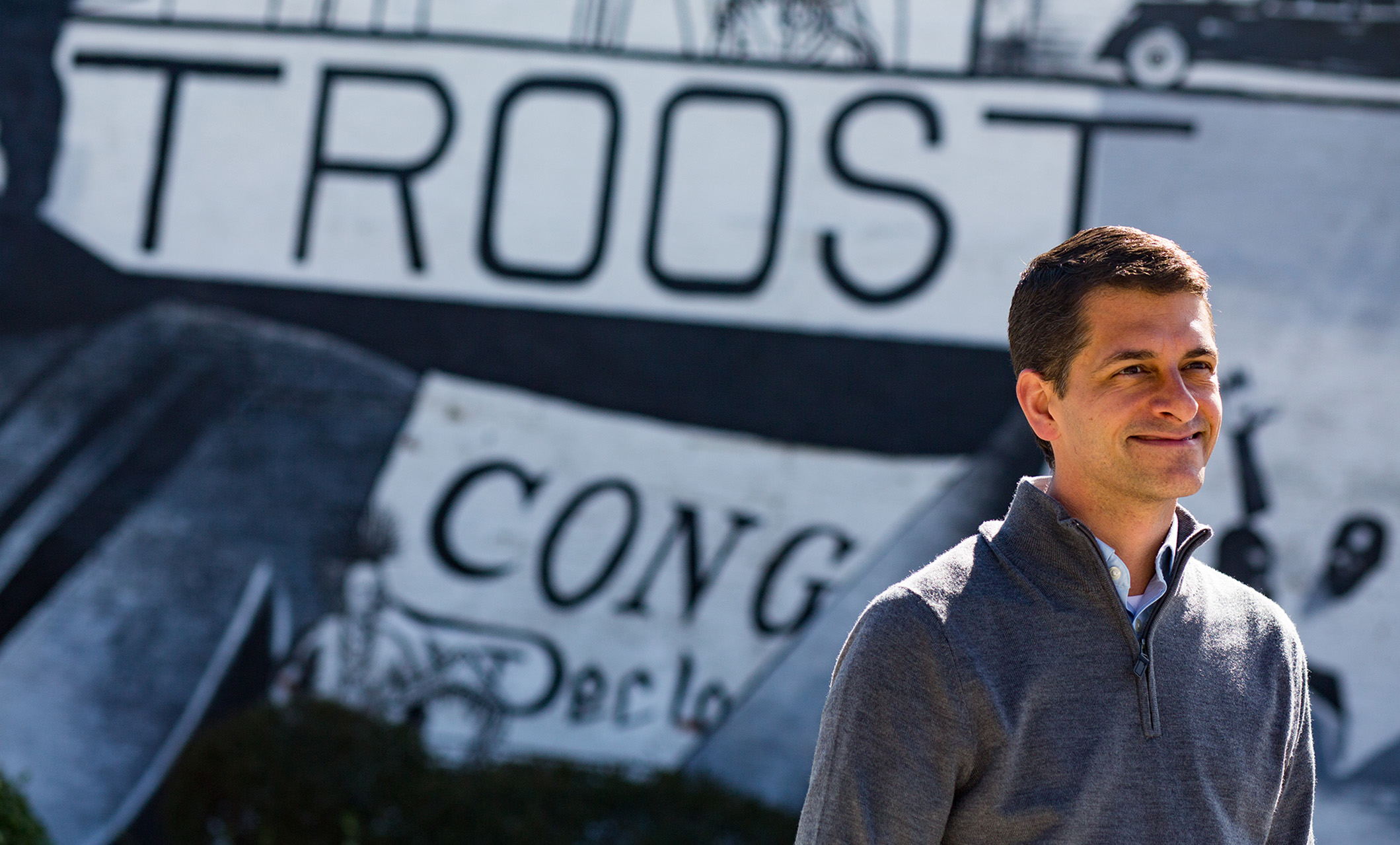The large numbers of urban real estate left vacant or abandoned is a problem facing the Kansas City and St. Louis metropolitan areas. Academic and community leaders from the two cities gathered on Feb. 10 to tackle the matter in the latest segment of UniverCities Exchange, a collaborative between the University of Missouri-Kansas City and the University of Missouri-St. Louis.
In the 90-minute program, the panel outlined the issue of vacant and abandoned properties and discussed cutting-edge prevention and mitigation strategies to address the problem.
Sarah Fenske, host of St. Louis on the Air, served as moderator. The session’s panelists included:
- Brent Never, UMKC associate professor of Public Affairs and coordinator of the UMKC Institute of Data Education, Analytics and Science (IDEAS)
- Peter Hoffman (J.D. ’12), managing attorney, Neighborhood Vacancy Initiative, Legal Services of Eastern Missouri
- Nailah R. M’Biti (M.P.A. '15), chief real estate development officer, Ivanhoe Neighborhood Council, Kansas City
- Sundy Whiteside, board president, Saint Louis Association of Community Organizations
- Geoff Jolley, executive director, LISC (Local Initiatives Support Coporation) Greater Kansas City
- Ruben Alonso III, president, AltCap, Kansas City
- Neal Richardson, president, Dream Builders for Equity, St. Louis
Here are some highlights of the panel’s conversation regarding these problems facing Kansas City and St. Louis and how communities are addressing them.
“When you live on a block with several vacant houses there is a sense of insecurity, because of the fact that there are not eyes on the street, so it can be perceived as being very unsafe. The other thing that happens is neighborhoods with a lot of vacant homes also become very disconnected in terms of the residents with one another, especially if you're on a block where there may only be three houses that actually have people who live in the house”. ‑ Nailah R. M’Biti
“Land Bank houses are one way that we have tried to move properties from being vacant into being filled with families, adding to neighborhoods. One major issue is what's called a clouded title. A very quick example. Your family sells a house but maybe the transfer with the family members wasn't so clear and you have a clouded title, meaning is not so clear who owns that house, who is in custody. A large percentage of our houses that are vacant and abandoned are because of this clouded title problem.” - Brent Never
“As we've had this historical disinvestment, particularly in our communities of color, we have pulled that wealth and those assets out of the Black entity. We must be intentional and keep reinvesting and being sure that we're providing opportunities in the same communities for people to then build that wealth.” - Geoff Jolley
“It's not just providing the capital, but it is really a question of how do you engage the community, the neighborhood, and empower that neighborhood and build that capacity so that they can really be very involved and engaged in the process of rebuilding and bringing cohesion back to their community”. - Ruben Alonso III
“The same neighborhoods that suffer from disinvestment and high vacancy rates are also the same neighborhoods with the highest poverty rates, the highest crime rates. We're looking at 12,000 vacant properties that are privately owned in the city of St. Louis. It's an enormous problem that has gone on for way too long. Just the sheer volume, I think, is probably the biggest challenge we face, and being able to bring in enough resources to meet that challenge.” - Peter Hoffman
“The city of St. Louis has the third highest vacant property rate in the country. About 65 percent of the African American population lives in high concentrations of vacancies versus only 19 percent of Caucasians. And there's a greater impact on these high concentrations of vacancies. They created lower property values, higher rates of drug and gun crimes and illegal dumping, poorer environmental health, lower quality of life and really a lost sense of community pride.” - Sundy Whiteside
“We engage with the neighborhood associations and work to identify (nuisance) properties and build them with the youth that live there. Ultimately, this creates the inventory for homebuyers to have a safe place that they feel confident was constructed for them and created for them to be engaged. As we bring these vacant properties that have been sitting vacant for generations back onto the market, it is going to be creating housing stock that is safe and affordable for the communities to begin to start to rebuild and transform.” - Neal Richardson
UniverCities Exchange began in fall 2020 during the UM System Extension and Engagement Month with a discussion of health disparities faced during the COVID-19 pandemic. The goal of these conversations is to foster a connection for future collaboration across Missouri.
View the full UniverCities Exchange discussion below:

